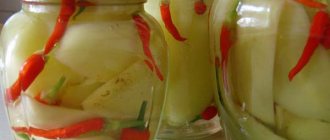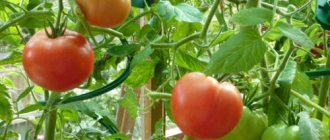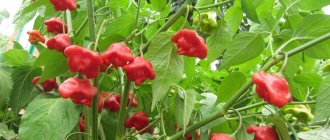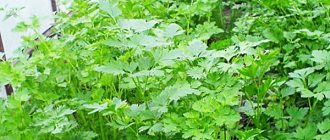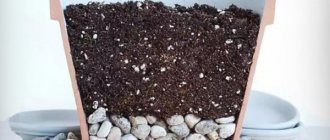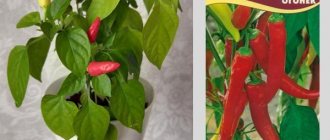General information
Based on the content of bitter substance, sweet (vegetable), semi-hot and hot peppers are distinguished. All three types are cultivated at home, and mainly decorative forms of hot chili peppers with miniature fruits of various shapes and colors are grown on the windowsill in pots.
This exotic, pungent plant can be used to prepare a variety of dishes, from pizza to pasta and sauces. Chili will make you feel the heat even in winter.
The pungent taste of pepper fruits is due to the chemical substance they contain, capsaicin, which has an incredible heat. A drop of a solution containing only 1/1000 mg of capsaicin can cause a prolonged and severe burning sensation.
Varieties
There are many types and varieties of hot peppers that can be planted on the windowsill. Take a look at the range of seeds that are most often grown at home:
- Jalapeño - grows quickly, forms compact bushes 50-100 cm high. Up to 40 fruits 5-8 cm long, 2-3 cm in diameter, weighing up to 50 g ripen on the bush at the same time. The color is dark red, but green, unripe fruits are also used . The taste is fruity-burning, moderately spicy.
- Hot cherry – from sowing to the first harvest 85-90 days. The plant is small, compact, all dotted with small round red fruits 2.5-3.5 cm in diameter.
- Habanero is one of the hottest peppers. The plant is branched, the fruits are 3-4 cm long, up to 2 cm wide, uneven, cone-shaped, red or orange when ripe.
- The fiery bouquet is a productive, tasty chili, great for cooking. The fruits are cone-shaped, curved, red.
- Spice Boys are small plants, ideal for a 1-liter pot on the windowsill. White, green, and purple pods become orange, red, and yellow as they ripen.
Features of home care
Seedlings about 2 months old are transplanted into permanent containers in which the plants will be grown in the future. If the soil is depleted, then you can transfer the plant into a large container and add a nutrient substrate.
It is also possible to replace the top layer of soil in the pot. Caring for peppers consists of timely watering, fertilizing, forming a bush and controlling diseases and pests (if the need arises).
Watering
The issue of watering peppers also has its own subtleties:
- You cannot water with cold water, it should be at room temperature, soft and settled.
- Seedlings should not be over-watered, as blackleg disease may occur, which can destroy all seedlings. For prevention, dusting the soil under crops with wood ash is used. This will also serve as additional feeding.
- Watering is carried out as the top layer of soil dries. It is better to water into the pan, but make sure that there is no stagnation of water in it (if half an hour after watering there is water in the pan, then it needs to be drained).
- Watering becomes more frequent if the ambient temperature rises.
Top dressing
This crop depletes the soil, and in order not to replant it every year, fertilizers are used. Adult plants are fed once a month. For this purpose, mineral and organic fertilizers are used, or better yet complex ones.
The following options apply:
- for mineral fertilizing per 10 liters of water, you can use 30 g of superphosphate, 20 g of ammonium nitrate or 25 g of potassium sulfate (optional);
- As an organic fertilizer, use a solution of chicken manure (1:10) or mullein (1:4), which is kept for 5–7 days and re-diluted before use (1 liter per 10 liters of water);
- Mineral fertilizing is alternated with organic matter or complex fertilizers are used (the latter use Kemira Lux, Agrolife, Agricola, Rostok and others, according to the instructions);
- spraying with the preparation “Ovary” has a positive effect on increasing the number of ovaries and fruits;
- The most common fertilizer is an ash solution (2 tablespoons per 3 liters of water), which is used at intervals of 2 weeks.
Formation and pollination of the bush
Indoor hot pepper varieties are usually quite compact, so they do not require pruning or pinching.
Important! Hot pepper varieties for indoor cultivation are mostly
hybrids capable of self-pollination.
But if problems arise with this, then the branches with flowers need to be shaken several times or using a brush to transfer pollen from one flower to another. But since the growth period of the plant is quite long, if desired, you can carry out the following actions:
- to enhance the branching of the bushes, after reaching a height of about 20 cm, the top of the plant is pinched;
- every 3 years the bush can be rejuvenated, improving its decorative effect; for this purpose, old shoots are pruned;
- When pruning peppers, shoots growing inward and those that have already bear fruit are first removed;
- At the beginning of flowering, the first bud located in the branch of the stem is removed.
Sometimes cuttings are practiced to preserve species qualities. Cuttings are taken from young, not yet flowering stems. Their length is about 8 cm.
Pest and disease control
If a plant is grown indoors, this does not mean at all that it is not afraid of diseases, and especially pests. Among the misfortunes that peppers can be exposed to, the most common are:
- Aphid - loves young leaves and shoots. In order to combat it, they are sprayed with drugs such as “Fitoverm” or “Bitoxibacillin”.
- Spider mite - causes curling of young leaves, which later become covered with cobwebs. The consequence of mite infestation is the cessation of plant growth and development. In the fight against mites, the same biological products are effective as in the fight against aphids. Tobacco, scattered on the soil in a pot, also serves as a good remedy for ticks.
- Apical rot — to prevent the disease, spray with a 0.2% solution of potassium nitrate.
- Blackleg — it affects seedlings in the early stages. This comes from waterlogging. For prevention, the fungicide “Previkur” is used.
How to grow hot peppers from seeds on a windowsill
In an apartment, you can start sowing as early as January, since the hottest varieties usually have a long growing season.
Pre-soak the seeds overnight in warm water or epin solution.
Fill small low containers with prepared soil for seedlings, sow the seeds (not too thickly) and sprinkle with a thin layer of soil.
Peppers need a lot of heat to germinate, so first place the container with the seeds in a warm, dark place and cover with a plastic bag. They germinate at a temperature of 21-28 C.
Shoots will appear approximately a week after planting. But don’t worry if they are in no hurry - the pepper germinates well if the seeds are fresh.
Once germinated, move the hot peppers to a warm, sunny windowsill.
After the seedlings have their first true leaf, they are transplanted one plant at a time (picked) into pots with a diameter of 10-15 cm.
Description of indoor pepper and its types
House pepper (capsicum) is a prominent representative of the Solanaceae family. It grows well both in open soil and in a flowerpot in an apartment. This perennial can live in an apartment for up to 5 years. The branched crown is covered with sharp, long or ovate leaves, the color of which can range from light to dark green. Flowers are formed singly or in bunches. The color of the petals is most often white. The color and shape of the pods depends on the variety. Most varieties are characterized by abundant fruiting.
Capsicum
The most common is the Shrub species, which can live on a windowsill or loggia for 5-6 years. The height of the bushes varies from 15 to 45 cm. Popular varieties: Ogonyok, Bride, Queen of Spades, Carmen.
Bride
Berry-bearing (berry) peppers were named due to the flattened shape of the fruit, which looks like squash. The bushes grow up to 80 cm. The pubescent varieties are often grown in open soil, but some (for example, Rokoto) bear fruit well in pots. The stems, leaves and even flowers of this pepper are covered with thick pubescence.
Rokoto
Among the variety, it is worth familiarizing yourself with the most common homemade peppers.
You may be interested in:
The best varieties of hot pepper for the Moscow region Hot pepper is a vegetable with a piquant taste, widely used in culinary arts. Housewives love to use it for...Read more...
Aladdin
The variety is one of the earliest ripening peppers and is characterized by high yield. The bush grows about 40 cm in height. The plant produces elongated fruits that, as they ripen, turn from purple or off-white to a rich red color. Aladdin can withstand lack of lighting better than others, so it is often grown without the use of additional lighting. Due to its strong aroma, the fruits are used as a spice for preservation.
Aladdin
Ogonyok
Ogonyok is the most popular indoor pepper. It belongs to the mid-early varieties, which ripen 115-120 days after germination. The elongated pod is deep red in color and has a smooth skin. The medium-sized bush produces fairly large fruits - about 45 g.
Ogonyok
Nosegay
This pepper is one of the smallest varieties; it can be grown even in a small room. Its height does not exceed 15 cm. The compact bush grows well in a container with a volume of about 1 liter. The fruits are very small and look more like berries than vegetables. Their color depends on the stage of maturation, which is clearly visible in the photo: first green, whitish, orange, and then red. The pod has a medium pungency.
Nosegay
Explosion Amber
The height of the branched bush does not exceed 35 cm. The variety is unpretentious and grows well in containers of 1 liter or more. The leaves, branches and stalks are colored green-blue. The color of the aboveground part depends on the light intensity. If the plant is grown in the shade, then the color is dominated by blue, and if in the sun - green. Mature pods have a rich purple color.
Explosion Amber
Care
As a rule, hot peppers grow quite successfully on the windowsill, develop well, bloom and bear fruit, but there are still important recommendations for care.
Temperature
Chilies are demanding of heat and die even from minor frosts, so the room climate is very suitable for them. In a pot on the windowsill, hot peppers can grow for many years. Most of all they like sunny windows facing south.
Make sure that the temperature does not fall below 15 C. Peppers do not tolerate sudden changes in heat and cold and abundant watering with cold water.
Watering
You need to water the peppers regularly, avoiding overdrying, but be careful not to “flood” them.
Lighting
Hot peppers need at least 6 hours of sunlight per day. With a lack of light, plants stretch, their leaves turn yellow, buds and ovaries fall off.
If plants receive additional lighting in winter, they will bear fruit better.
Experienced homemade chili lovers recommend 12 hours of light and 12 hours of darkness. Increasing the light time to 16 or even 18 hours a day will help hot peppers grow quickly and well.
Top dressing
While light and water are the most important for hot pepper development, there are other nutrients needed for growth and fruiting. These are nitrogen, phosphorus and potassium. But don’t overdo it with fertilizer!
After the plants bloom, you can feed them a little potassium.
If your chili pepper leaves become wrinkled or have dark spots on the tips of the pods, your plant is lacking calcium and phosphorus.
Pollination
Peppers self-pollinate well. Just gently shake the plants from time to time. This simulates the action of wind that occurs in nature.
Transfer
As the plants grow, larger pots will be needed. The standard progression of diameters is 7 cm, 15 cm, and then the final 20 cm.
To repot a plant:
- Fill the pots with fresh soil and lightly moisten it with water.
- Then make a fairly large depression in it.
- Carefully remove the plant from the previous container, grabbing the roots with a clod of soil so as not to damage them.
- Place the pepper in a new pot, gently firm the soil around the stem and water lightly.
Trimming
To make the bush grow more lush, its upper shoots, which have reached 40 cm, are cut off. Chilies respond very well to pruning.
Pests
One of the main pests of chili peppers is the green aphid. Even one individual that accidentally gets into your apartment from the street can infect your plant, creating an entire army of offspring.
To get rid of aphids, wash the leaves and stems with a stream of water. The use of chemical control agents is not recommended.
Possible growing problems
During the growth period, the root system very quickly masters the new soil, so due to a lack of soil and nutrition, peppers can shed leaves and flowers. It is important not to neglect fertilizers during growth and flowering, and also to stimulate the formation of ovaries through artificial pollination.
Active leaf fall occurs in winter, especially in stuffy conditions. Without air circulation, leaves quickly evaporate moisture and weaken. High temperatures in winter with a lack of light are most destructive for this plant. In such conditions, the bushes grow weak and deformed. The delicate foliage of peppers instantly responds to any changes, be it temperature changes or excessive watering. The tips of the leaves may darken from excess moisture, and loss of brightness indicates a lack of microelements.
Hot peppers are very resistant to pests, but if not properly cared for they can be affected by aphids and spider mites. If this does not happen during the fruiting period, you can use bio-fungicides, Fitoferm, for example, to combat it. If your pepper is bearing fruit when you discover pests and you are using its fruits for food, try to fight aphids or spider mites using the same fruits.
Grind several peppers in a coffee grinder and cover with warm water for a day (for 2-3 peppers, approximately 100 ml of water). Then add liquid soap to the infusion (for sticking) and spray the affected plants. After a day, the procedure must be repeated.
In general, nightshades are unpretentious. Having found a common language with hot indoor pepper, you will begin to understand what exactly this plant needs and correctly assess its condition.
Harvesting
60-70 days after sowing, the plants bloom, and subsequently they produce fruits of various colors (depending on the variety) - from brown to bright purple or yellow. When the fruits ripen, in most varieties they turn red. It is better to cut them with a knife.
It is better to pick the very first fruits while they are still green to stimulate further fruiting.
You can harvest fresh chiles from late spring until December. One plant can give you over a hundred hot peppers.
Useful tips and secrets
- Chilli can be planted any time from January to May, but earlier you have a better chance of starting to bear fruit quickly. By sowing seeds in January, you will harvest in July.
- By mid-May, when it is warm enough, move the pepper pots to an open balcony or veranda, but in a place protected from the sun.
- The spicier and more unusual varieties, such as habaneros, take longer to ripen.
- The yield of peppers increases in the second and third years.
- Check your plants regularly to make sure there are no aphids and that the soil is still relatively fresh.
- After 4-5 years, the pepper harvest will decrease, and it will be time to grow a new plant.
So, to grow hot peppers on a windowsill in winter you will need a sunny window, a spacious pot with fertile soil and simple care. Compact bushes with many original bright red and green fruits are extremely beautiful and perfectly decorate the apartment.
Plant characteristics
Breeders have specially developed several varietal varieties of hot peppers for growing on windowsills. This indoor pepper is also divided into a fruit variety and an ornamental one (without fruit).
The fruit variety of indoor hot pepper is a perennial that reaches a height of no more than 40 cm . The plant has bright green leaves and richly colored multi-colored fruits: scarlet, sunny or orange.
Growing indoor peppers is not difficult and does not require any special knowledge or wisdom. Very unpretentious and undemanding in care .
The windowsill is ideal for growing light-loving peppers
It is recommended to grow and plant peppers exclusively on windowsills, since the vegetable is very sun-loving, and with sufficient sunlight it will certainly delight you with beautiful fruits with a piquant, pungent taste.
Flowering begins in June. During this period, delicate white flowers with a slightly yellowish tint appear on the stems.

